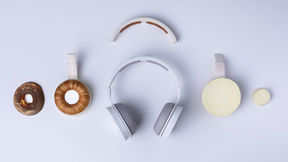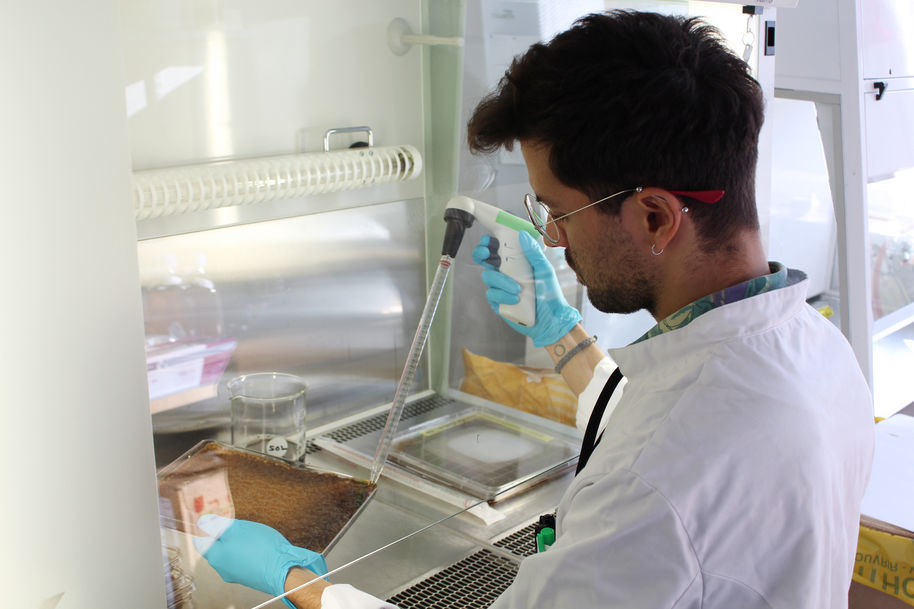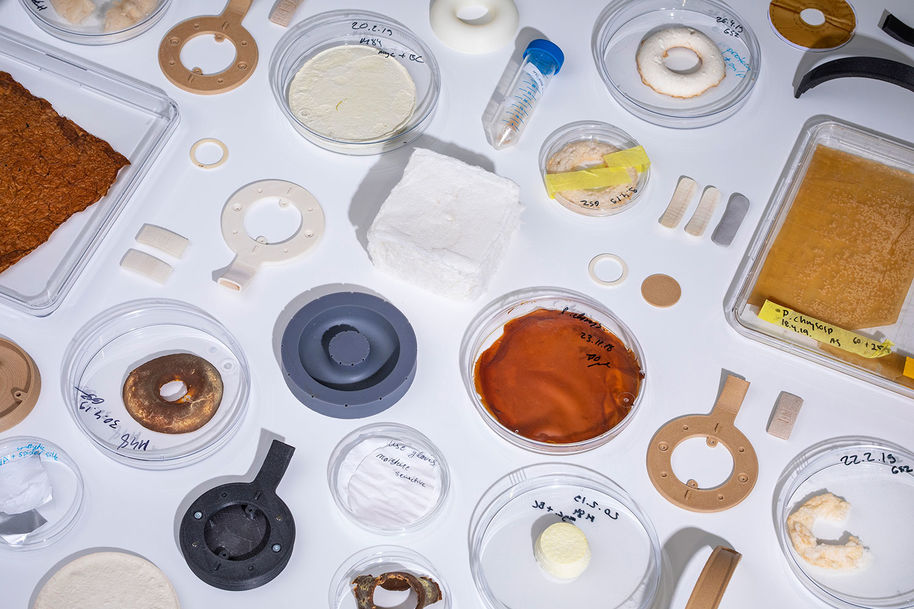Sharing a CS graduate experience in Korvaa – multidisciplinary collaboration in practice
Manuel Arias Barrantes graduated as a Master of Arts from the Creative Sustainability programme this year. In this article, he shares his experiences in a multidisciplinary material research project which stems from the desire to replace fossil and animal-based materials.

The Korvaa headset, is a science and design initiative showcasing the research and development of microbial materials.
The main idea behind this project was to apply key findings from the lab into an object (proof-of-concept) to highlight the research of novel, biologically engineered materials. In this respect, a headset was an ideal object to apply these lab-grown materials given the combination of materials it comprises and their properties: soft, hard, foamy, and leather-like. The headset is also a highly relatable consumer product.
My role in this project was mostly on the material research and development of fungal leather-like materials. These fungal leather-like materials were used on the lower part of the headband and as a cover for the ear foam pads.
As a recent graduate from Aalto University, this project illustrates the type of sustainability-related challenges and transdisciplinary environments that the Creative Sustainability MA Programme prepares you for. The knowledge and professional background of the people working on the project were as varied as the materials utilized. In this project, I worked with other designers (product designers), material scientists, microbiologists, documentarists, and many others. We all had different ideas and ways to approach the creation of the headset, but had one interest in common: the desire to replace fossil and animal-based materials.
From a design viewpoint, this project offered a glimpse into rapidly developing technologies and how materials are transforming our design and manufacturing processes. Moreover, it illustrates how laboratories are becoming new workplaces for designers and how we, designers, are no longer just choosing materials to materialize our design concepts, but rather making crucial sustainability-related decisions at the very beginning of the design process with other professionals to improve a product’s environmental impact.
My involvement in the project happened while completing my Master’s thesis in collaboration with VTT Technical Research Centre of Finland which focused precisely on the development of fungal leather-like materials as an alternative to animal leather.
For the team Korvaa, this project offered an interesting playground to mix design thinking with a scientific mindset aimed at material fabrication and product development using living organisms.
As for the future plans for the project, we hope to continue taking this idea further by improving the materials and showcasing the headset in many other exhibitions.
More information about the project is found at www.korvaa.com.








